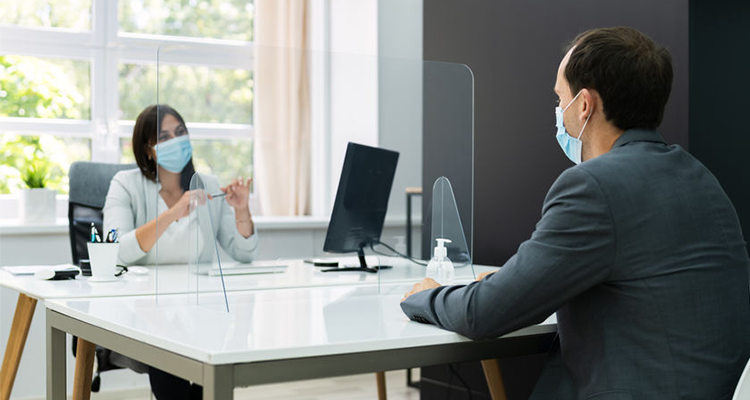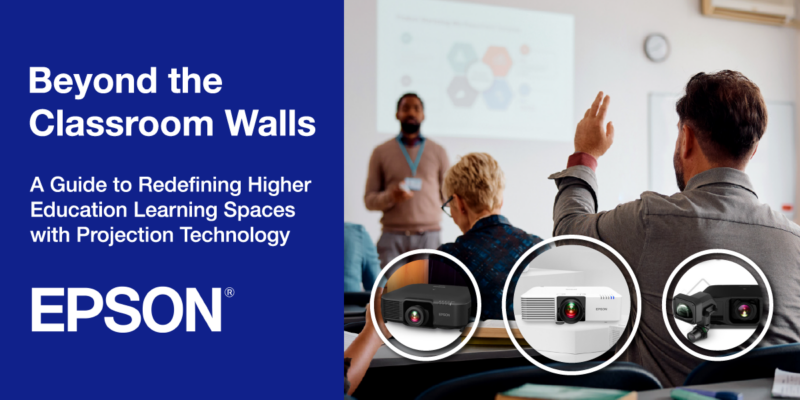The Changing Face of the Corporate Workspace

By Adam Cox
Futuresource Consulting
2020 was a tumultuous year and one that will cast a long shadow over almost every aspect of our lives. For many of those normally working in offices, one of the most significant changes has been being forced to work from home as most countries around the world went through various stages of “lockdown.”
Evolution, not Revolution
It’s fair to say that the change in working practices brought on by COVID-19 were sudden, dramatic, and for many a steep learning curve, but what of the post-COVID world? Can we expect a continuation of the current way we work?
The consensus from both end users and decision-makers is no, not entirely. But that does not mean we will return to the old ways of working. Futuresource recently published the Home Working Report, a piece of end user research examining the working habits of end users who had worked from home at some point during the pandemic. One of the key findings of this report was that the proportion of end users who expected to work from home full time after the pandemic passes (16%) was roughly the same as the proportion who worked from home full time before the pandemic (18%).
Crucially, however, the proportion of respondents who “never” work from home dropped from 17% before COVID-19 to an expected 9% post-pandemic. This therefore means that hybrid working (splitting the working week between the office and home) is expected to become the norm for most respondents — a shift from 43% pre-COVID to 56% post-COVID.
The longer-term picture is therefore one of evolution, not revolution. There are clearly perceived benefits to working from home (no commute, fewer distractions, more family/personal time etc.) and to working in the office (better for collaboration, team cohesion etc.). Hybrid working allows for the best of both worlds while minimising the compromises that have to be made.
What Does This Mean for Life in the Office?
With hybrid working the norm, companies will be faced with the decision on what to do with all the excess office space. While the trite answer would be to suggest that all companies immediately downsize in order to save costs, as with everything the reality will be more nuanced than that. There will, undoubtedly, be companies that downsize their office space, either by moving to smaller premises or by subletting parts of their building. The latter option may be of particular interest to companies with long-term leases as they do not have the option to move unless they sublet the entire office space.
So, what of companies that cannot move and decide not to sublet? In a hybrid working environment, we expect people to tend towards organising their working week around where they are working from. For example, completing “heads down” tasks while at home and engaging in more collaborative activities when working in the office. This is by no means a black and white issue where these activities will exclusively be restricted to these respective locations, but more of an expected trend.
If the time spent in the office is expected to be more focused on interpersonal collaboration, then it is reasonable to assume that more office space will be needed for meeting rooms. In addition to this, social distancing is likely to be with us for a while yet and even after COVID-19 passes it will remain a factor in the back of many decision-makers’ minds. We can therefore expect the size of meeting rooms to increase, which also puts pressure on the need for more larger meeting rooms (in order to replace the previous “largest” meeting rooms which have been rendered too small).
Social distancing on the office floor is another problem that needs to be solved. Perhaps counterintuitively, one of the ways this will be addressed is with an increase in hot desking. In Futuresource’s Home Working report, respondents expecting to hot desk in the office at least one day a week post-COVID increased by 13% points compared to pre-COVID levels (49% vs 62%). Hot desking will allow companies to maximise the space between employees, especially in an environment where a significant proportion of employees are home working on any given day.
Companies are also looking at new ways to use existing office space and one example of this is the construction of small video production studios. The rise of videoconferencing has also put video center stage in terms of how companies communicate both internally and externally. While most video conferencing solutions are fine for everyday use, where communications are mission-critical, quality will become paramount. This extends to both image quality and also production values and so an increasing number of companies will use excess floor space to install small video production studios for both live and non-live content creation. This was a trend that was already happening before the pandemic, but the cultural shift has only served to accelerate video adoption in the corporate space.
Coping With COVID — Is Technology the Answer?
Even with vaccines being rolled out globally, there is a very real prospect that it will still be a long time until society returns to “normal” and so business has to adapt to a situation where we will live alongside the virus. While videoconferencing and remote working is obviously a key element of this, a safe return to the office, at least in some capacity, is high on a lot of companies’ agendas.
Social distancing is a key tool in combating the spread of the virus, but how possible is this within existing offices? People move around, go to meeting rooms together, pass in the corridor and interact in myriad different ways. The consequence of the virus infecting a group of employees simultaneously could be significant and directly impact the smooth running of any business.
Many of the leading companies addressing office and meeting room technology are currently looking at solutions to combat this. AI and the idea of smart buildings are at the core of most products, with solutions ranging from cameras able to determine the number of people in a meeting (and thus informing users if the room is exceeding capacity) to full facial recognition and employee tracking. While understanding where employees go in an office and, crucially, who they interact with has the obvious benefit of allowing a small scale “tack-and-trace” operation to allow the containment of virus outbreaks, there are significant ethical issues surrounding this.
People are accepting of a surveillance culture to a certain extent — indeed, living in an online world is based on the trade-off of some personal privacy with the benefits given by online companies — but there are concerns that such tracking products used in the office could go too far for many people. Although well-intentioned, at least initially, such products are inherently invasive, and working under what some could call Orwellian conditions could prove to be a major hindrance to talent retention.
Despite this, the use of AI within meeting rooms to aid in the monitoring of usage will increase over the coming years, but ultimately the market will decide what level of monitoring will be acceptable.
The extent to which advanced technologies such as AI will play in the safe return to the office is yet to be seen, but what is certain is that the wider adoption of collaboration technologies has changed the way in which traditionally office-based employees work. Be it working from home or in the office, collaboration tools are now center stage like they have never been before. This is paving the way for a much more flexible working culture in the future, something that is going to become increasingly important as the generational change within the global workforce picks up the pace and the expectations of millennials and Generation Z employees become more important.
This is part of the Installation ProAV Nation Report series covering education technology, digital signage, AV purchasing in education, corporate audio and residential technology.
You can download the full report here.




